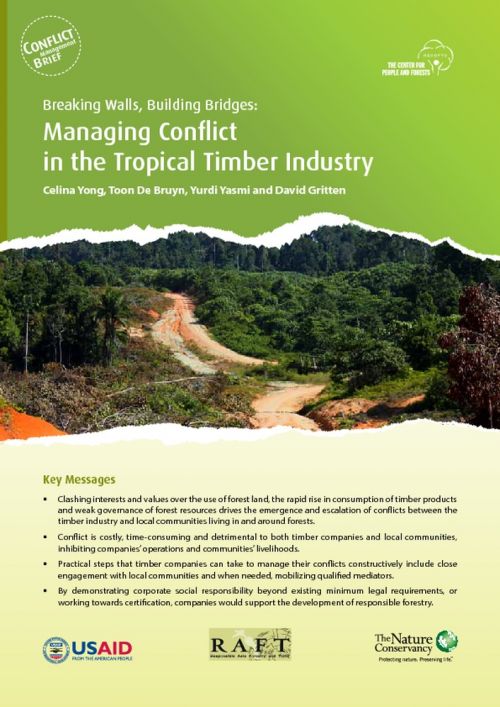APA 6th ed. Breaking Walls, Building Bridges: Conflict Management in the Tropical Timber Industry. (2011, August 1). Retrieved from https://voices4mekongforests.org/publications/0000045
MLA 8th ed. Breaking Walls, Building Bridges: Conflict Management in the Tropical Timber Industry. RECOFTC, 1 August 2011, https://voices4mekongforests.org/publications/0000045.
Chicago 17th ed. RECOFTC. 2011. "Breaking Walls, Building Bridges: Conflict Management in the Tropical Timber Industry." Published August 1, 2011. https://voices4mekongforests.org/publications/0000045.
Breaking Walls, Building Bridges: Conflict Management in the Tropical Timber Industry

Due to growing environmentally and socially aware markets on a global level, as well as on a regional level, and with more recent gains for democracy in the region, companies have to ensure their operations are socially and environmentally acceptable. Today, the timber industry is under immense scrutiny, an example of this is the Forest Law Enforcement, Governance and Trade (FLEGT) action plan of the European Union5 which makes explicit the importance of measures to address local and indigenous peoples’ rights to the forests. Companies that will survive and thrive are those that adopt strong and robust social safeguards, including promoting socially responsible logging operations, failure to do so will, through such mechanisms as the US Lacey Act and EU FLEGT, see their market options becoming increasingly restricted. Success for the companies depends on creative and innovative ways to manage and transform social conflict with local communities.
Clashing interests and values over the use of forestland, the rapid rise in consumption of timber products and weak governance of forest resources drive the emergence and escalation of conflicts between the timber industry and local communities living in and around forests. What does this mean for the timber industry, and how can companies deal with conflicts with local communities living in and around forests? This brief examines the cause and effect of conflicts between the tropical timber industry and local communities over forestland in Asia and the Pacific, providing practical steps that timber companies and local communities can adopt to manage conflict.

